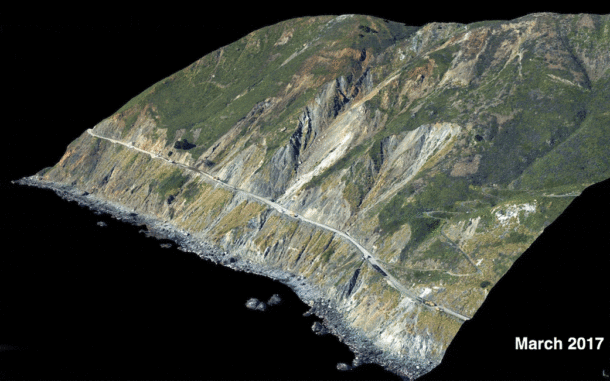
A series of images shows the collapse of the Mud Creek landslide in May 2017 along the Big Sur coast in Central California, and the subsequent repairs to Highway 1, which was damaged during the event. The full animated gif can be viewed on the Earth Imaging Journal home page at www.eijournal.com. (Credit: Andy Ritchie/USGS Pacific Coastal and Marine Science Center)
Climate change is driving more-volatile precipitation patterns around the world”very dry stretches punctuated by storms that drop large amounts of rain or snow in a short amount of time. While wetter and drier spells may have certain effects that are easy to predict, such as on water levels in lakes and rivers, a recent study focused on California reveals that they can affect slow-moving landslides in unanticipated ways.
The researchers expected slow-moving landslides”where land creeps downhill just inches to feet in a year”in bone-dry Southern California to behave differently from those in rainy Northern California when exposed to heavy precipitation and drought conditions. But that wasn't the case. The study authors found that landslides in wetter and drier regions of California showed similar sensitivity to precipitation extremes, moving on average faster and farther downhill during rainy periods compared to drought years.

